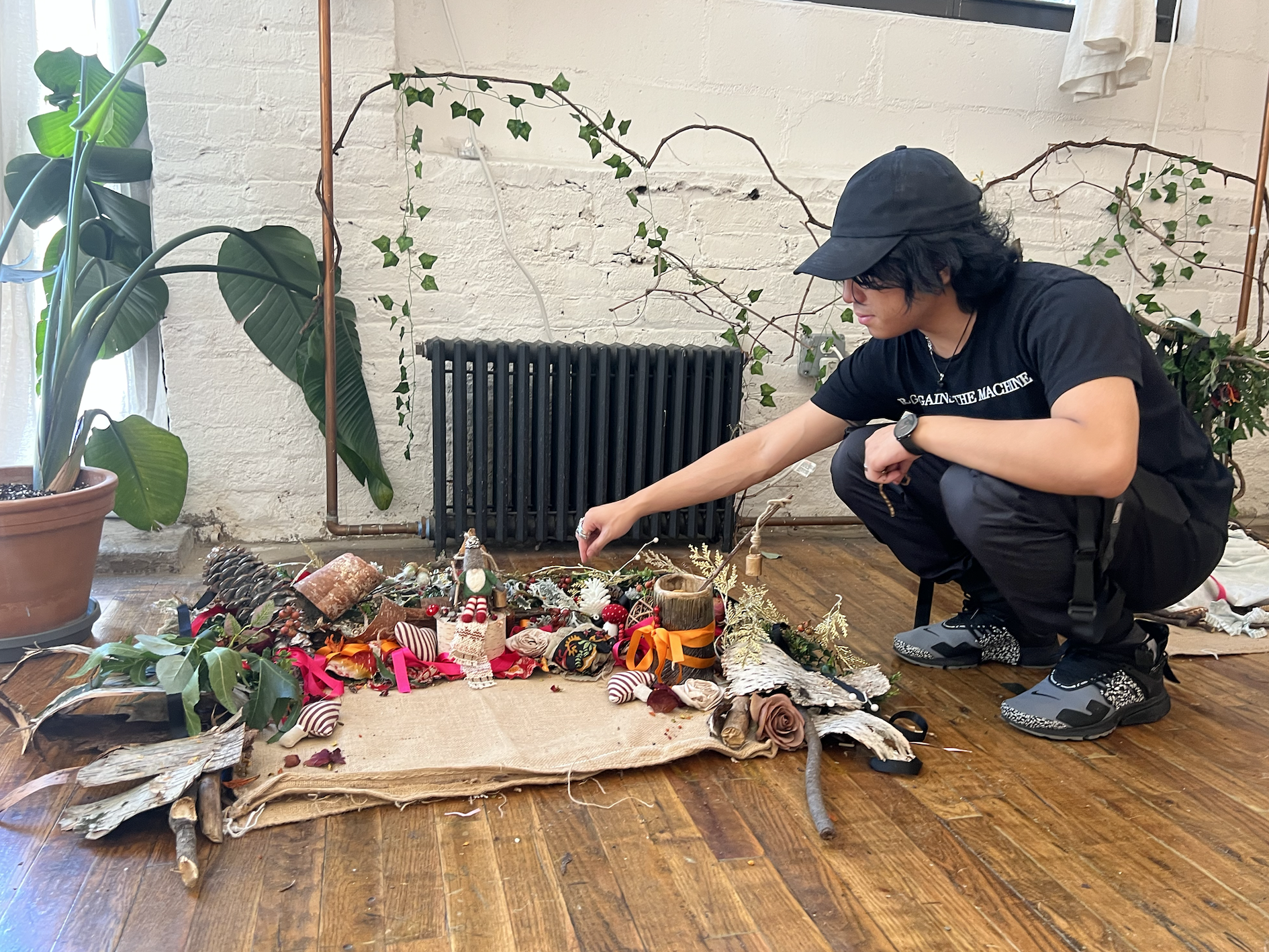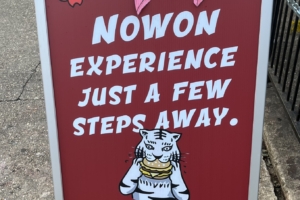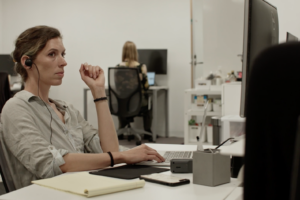A “safe space” can mean a lot of different things. In college campuses across the country, it can be a special, designated classroom where students can escape discrimination or harassment. In a corporate office, it can be a plushy room with an espresso machine. For others, it may not be as clearly labeled or classified and maybe it’s even your own bed. But for Brittany Knapp, who started Bushwick’s Art Therapy Place, safe spaces are something you create yourself—literally.
In late July, this theory inspired an unusual workshop—or “therapeutic interactive art installation”—where participants fashioned their own human nest. Creatively-inclined locals of all ages gathered amidst a forest of felt and fabric supplies, a pile of twigs, a handful of weeds and a heap of blankets and each mimicked birds, twisting and winding materials together.
“We wanted to create a kind of human nest, where people can forage for different sensory elements, because it’s good for trauma and dissociation—to help ground people in their senses,” said Knapp, who ran that workshop for free and says she drew inspiration from therapist Cathy Malchiodi, and had started the workshop after conversations with sexual violence survivors revealed the necessity of safe spaces.”
She sees a promising future for projects like those and hopes to spark broader conversations about safe spaces, including for newcomers who feel like they lack a sense of shelter and security.
“Some people have never felt safe,” Knapp admitted. Throughout the workshops she runs, people are encouraged to utilize what they have available to create safety, even when safety seems out of reach.
But for many, that kind of safety doesn’t come cheap.

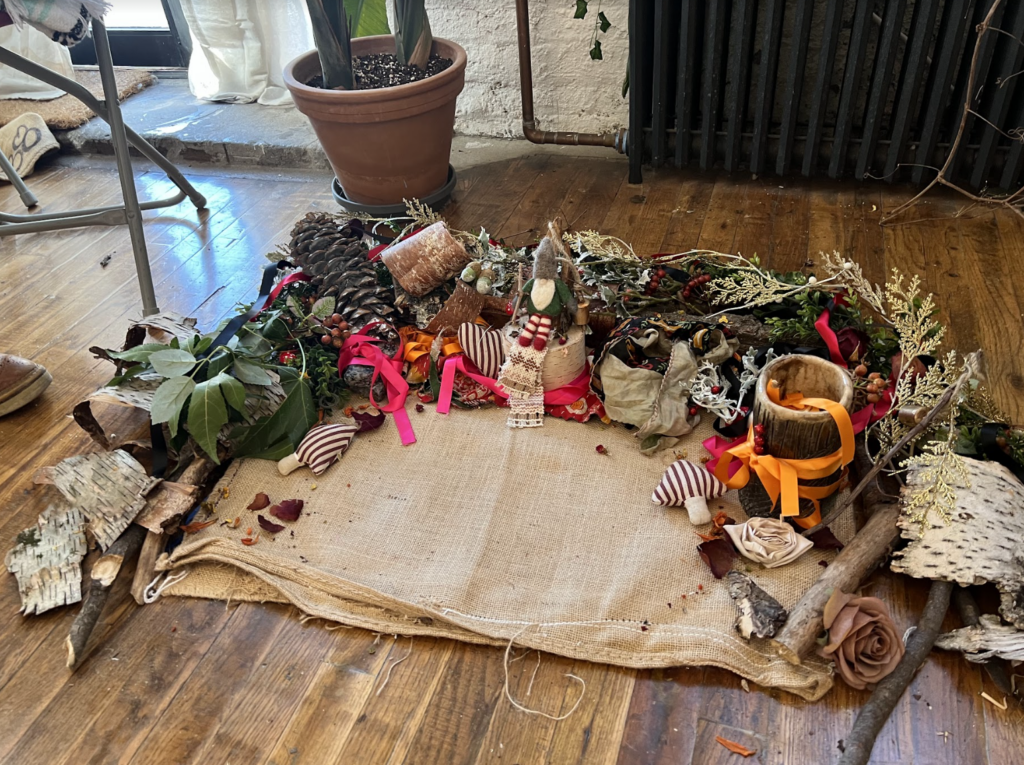
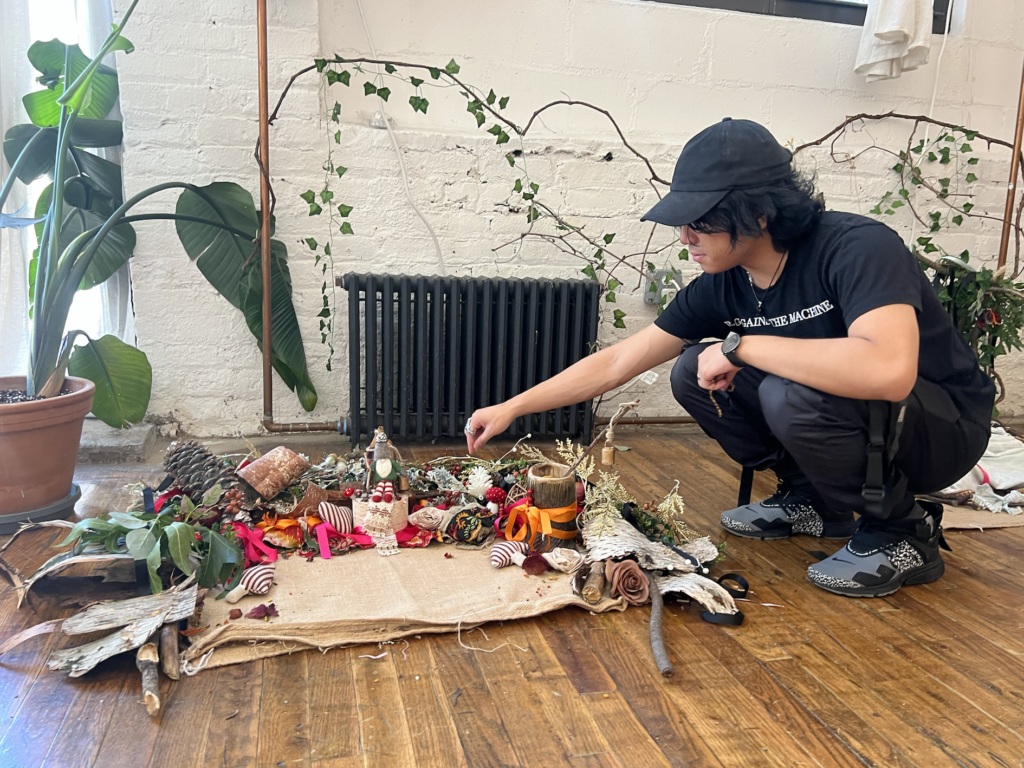
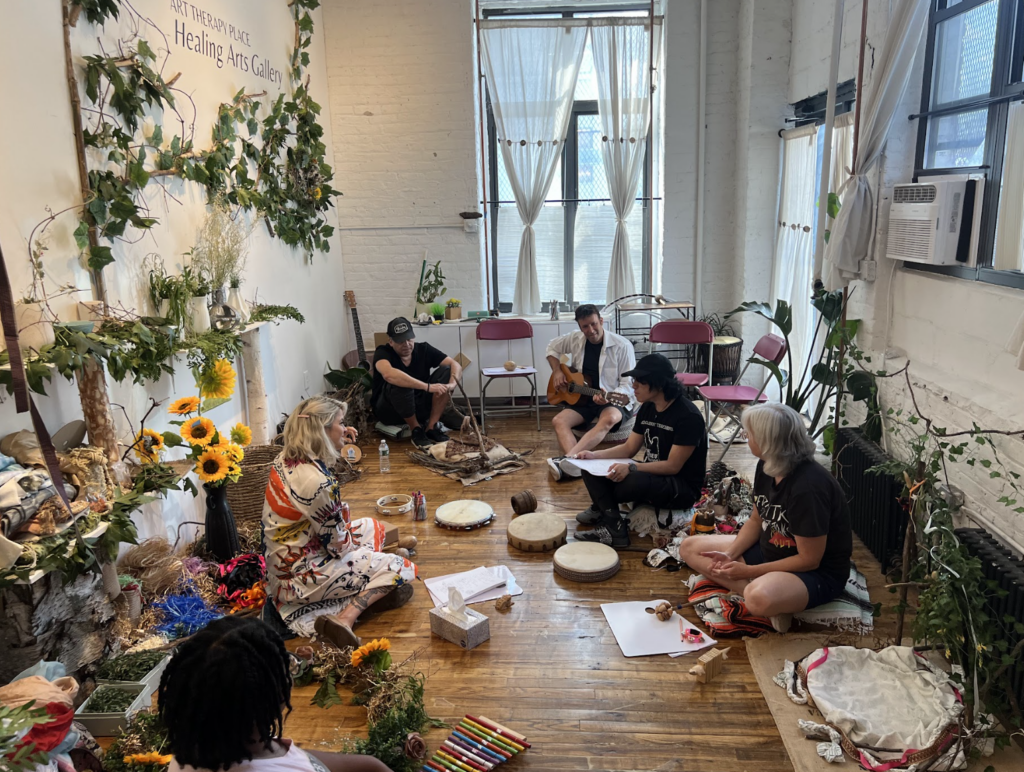
Although Knapp offers a few free workshops, her standard rate is around $150 per session, and isn’t covered by most insurers.
“Right now, the main barrier that we have to accessibility as therapists, and just serving people in our community who have Medicaid, is that licensed creative art therapists are currently not covered by any extra insurance except Cigna,” she said. “We’re not allowed to be ‘in network’ with most insurances in New York.”
This, admittedly, turns away a number of locals. A lot of Knapp’s clients have not been local, she said, which is something she wants to change.
It won’t be easy.
Maya Benattar is behind a group called the LCAT Advocacy Coalition, an acronym that stands for licensed creative art therapists. Benattar started the group in January after therapists like those were left off of three mental health expansion bills in New York state. One bill, signed in December, was initially intended to mandate that all insurance providers cover therapy provided by any of the four licensed mental health practitioner licenses in New York state— including licensed mental health counselors, licensed marriage and family therapists, licensed psychoanalysts and, of course, LCATs.
In the last minute, Gov. Kathy Hochul removed the latter group —which, at the time, counted for 14% of the practitioners who would have been covered by the bill.
Benattar said the removal was in part due to opposition from social workers, who want to be the primary providers of psychotherapy and regulate the scope of alternative forms of mental health care.
“There’s a lot of misconceptions out there about creative arts therapists,” she said. “But the reality is that creative arts therapists…are uniquely qualified, particularly to work with people who have experienced trauma and with those who may not speak English comfortably.”
Over the next few months, Benattar is planning on continuing to push for increased coverage in advance of next year’s legislative session. But as she continues to advocate, residents around the community are already facing rising financial burdens.
In fact, some local creatives say they’ve already been priced out. Jazo Brooklyn, a Puerto Rican and longtime Bushwick resident who runs a group called Educated Little Monsters, was displaced to East New York. She started the group in 2013 in the hopes of creating a space for youth of color.
“At that time, we were noticing a lot of the changes, a lot of the art, a lot of cafes, galleries, which seemed to be really cool at the moment…until we started realizing that a lot of these places weren’t inclusive,” she said. “And a lot of them weren’t really catering to the existing community, but more to the gentrified community, more to the white people moving in.”
She remembers trying to enroll her son and his friends in local theater programs, but facing continuous cost barriers: “It was like $400-500 a month and I was like, okay, well if it’s out of my range, why are you in my neighborhood?….Why would you open up in a community where you know a kid couldn’t afford it?”
She had hoped that theater would be good for her son’s spirit and mental health, she said.
“But then you can’t afford it. So who is it for? And who is the art therapy for?”
Brooklyn says that, that in a sense, her own nonprofit has been the best therapy that she thinks kids in the community could ever have. “They don’t want to sit with white therapists, they want to sit and talk with someone that looks like them, sounds like them,” she said.
To this day, however, her group has never been able to land a permanent space: instead, they have been forced to relocate nearly every year.
“Right now, we have to leave [our] new space by September 30,” says Brooklyn.
“It’s actually incredible to see how we continue to grow, and then we lose a space and then we lose everything,” she said. “And then we have to restart. So that’s kind of like the story of resilience of who we are.”
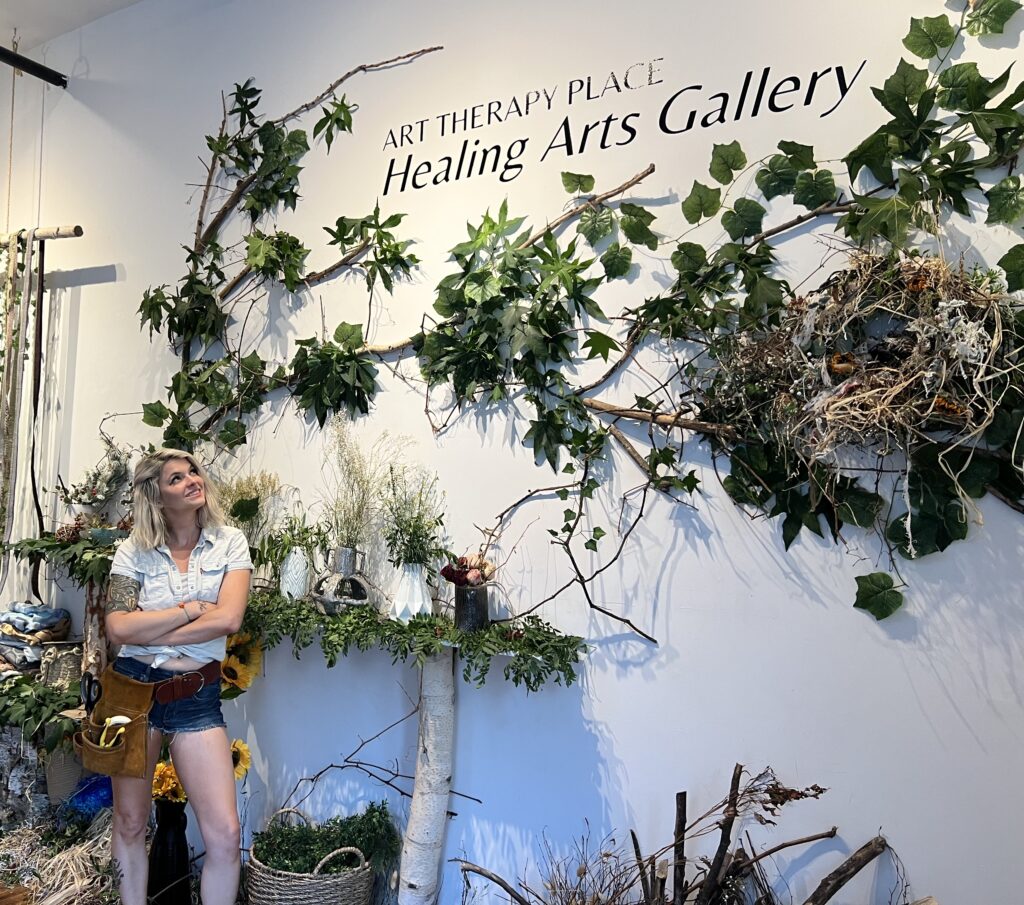
Art Therapy Place, on the other hand, has maintained a permanent location since opening in early 2021. Knapp has seen hundreds of clients over the years and now sees around a hundred on a rotating basis.
Describing herself as a former “troubled teen” who found solace in creativity, Knapp says she wants to decrease the stigma around mental health and ensure that all residents are able to experience the healing powers of art.
“The creative process is very much like life itself,” she said. “There’s ups and downs with it, there’s barriers that you’ve come up against in terms of what materials you have, what kind of money you have to put into your work, feeling discouraged at times or unsure, doubting your work and being invalidated.”
Caroline Frederiksen, an administrative assistant there who also runs their social media, says that “anyone is welcome.”
“Anyone can use art therapy and get benefits from it,” she added. “All ages, all creeds.”
Knapp herself has called the neighborhood home for nearly a decade and expressed a staunch commitment to vetting all employees and ensuring they “meet the needs of the community.”
Still, no Art Therapy Place employees are originally from Bushwick. None grew up in the surrounding streets or have any direct ties to its history.
One of the psychotherapists there, Allyssa Rivera-Cabrero, has specialized in dance and movement therapy for the office since 2021.
She lives in South Brooklyn, but the commute is worth it: she thinks it is “critically important” for Art Therapy Place to be in Bushwick.
“Where we are located has brought a lot of creatives to the space who have not been able to find therapy services that quite meet them in their own framework of living,” she said.
As a bilingual therapist, Rivera-Cabrero says that she’s been able to work with Spanish-speaking clients of all ages, especially young people.
She thinks it’s disappointing that therapy practices like hers have not been included in recent increased insurance coverage bills, saying that “we want to be accessible.”
The office has a few ways to circumvent the high costs they charge: working on a sliding scale of $75-150 for individual sessions, hosting discounted group sessions, offering payment plans and encouraging some clients to submit to insurance companies for out-of-network reimbursement.
But Rivera-Cabrero defends the amount they charge; “we need to be paid for our work in order to serve in the way that we do,” she said.
For instance, Knapp says that the mental health industry often sees a lot of staff burnout, which she pins on therapists across the state being paid poorly. She says that compensating her is key to her business model, as well as “according to my values by charging clients as little as possible and paying therapists as much as possible.”
But until the state will let her bill Medicaid, she says many will be unable to access the same kinds of safe spaces.
“We are hopeful the insurance bill will be reviewed,” she said. “Once this policy is in place, we will take the necessary steps to provide in-network care to all who can benefit.”
Images courtesy of the Art Therapy Place, taken by Caroline Frederiksen unless mentioned.
For more news, sign up for Bushwick Daily’s newsletter.
Join the fight to save local journalism by becoming a paid subscriber
